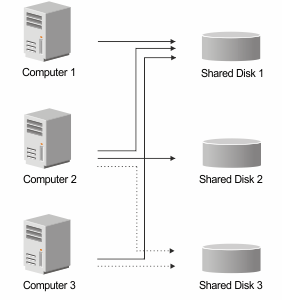Discovering software on shared disks
To discover software that is installed on shared disks, identify disks that exist in your infrastructure. Then, choose the method of scanning these disks that best suits your environment.
Software that is discovered on shared disks is reported on every computer on which the shared disk is mounted. It causes that license metric utilization that is calculated for the discovered software increases. When the software is reported on every computer on which the shared disk is mounted, it continues contributing to license metric utilization for the entire reporting period even if the shared disk is unmounted.
Scanned File Data
Requirements
Optimized mode

 Automatic scanning
Automatic scanning- In this method, one of the computers on which a shared disk is mounted is automatically designated to scan the disk and discover the installed software. The data is then populated to all computers on which the same shared disk is mounted. Every disk is scanned starting from the top level through all the child-level directories. In case only a child-level directory is mounted on a computer, this directory is not scanned again. The data is populated based on the scan of the top-level directory. For detailed instructions, see: Step 2a: Optimized mode - Automatic scanning of remote shared disks.
 Manual scanning
Manual scanning- The outcome of this method is the same as of automatic scanning. However, it requires more
manual setup. In this method, you create computer groups that contain only computers on which the
same disk is mounted. Then, you scan one of the computers in that group to create a software
template. Finally, you share the template between all computers on which the disk is mounted.
The choice of the scanned computer depends on whether some of the computer groups are overlapping and whether computers that access the same shared disk run on various operating systems. For detailed instructions, see: Step 2b: Optimized mode - Manual scanning of remote shared disks.
Basic mode
